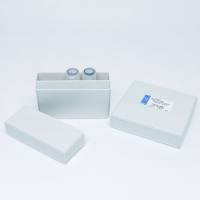Xenopus Oocyte Microinjection and Ion-Channel Expression
互联网
互联网
相关产品推荐

ASTL/ASTL蛋白Recombinant Human Astacin-like metalloendopeptidase (ASTL)重组蛋白Oocyte astacin (Ovastacin)蛋白
¥1836

细胞亚铁离子试剂盒,用于样本中Fe2+含量检测,微量法,Cell Ferrous Ion Content Assay Kit
¥179

epithelial Sodium Channel gamma Rabbit pAb(bs-4263R)-50ul/100ul/200ul
¥1180

IZUMO1/IZUMO1蛋白/Oocyte binding/fusion factor (OBF) (Sperm-specific protein izumo)蛋白/Recombinant Human Izumo sperm-egg fusion protein 1 (IZUMO1), partial重组蛋白
¥69

MIOS抗体MIOS兔多抗抗体Missing oocyte meiosis regulator homolog antibody抗体MIOS Antibody, Biotin conjugated抗体
¥880
推荐阅读
Microtransplantation of Neurotransmitter Receptors From Cells to Xenopus Oocyte Membranes: New Procedure for Ion Channel Studies
Biophysical Approach to Determine the Subunit Stoichiometry of the Epithelial Sodium Channel Using the Xenopus laevis Oocyte Expression System
Mesoderm Induction in Xenopus: Oocyte Expression System and Animal Cap Assay

